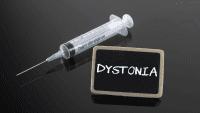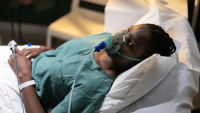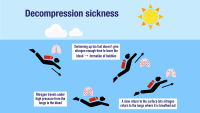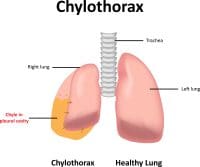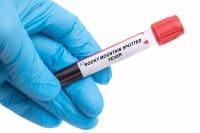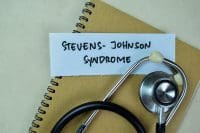RRT quickly discovers the cause.
- Syncope can result from several conditions, including electrolyte imbalance, hypothyroidism, myocarditis, acute coronary syndrome, and electrical disturbances in the heart.
- Atrial fibrillation increases the risk for stroke and cardiac complications, such as heart failure, decreased cardiac output related to ineffective atrial contractions, and syncope.
- Symptoms of bradycardia (heart rate less than 60 bpm) include lightheadedness and syncope.
Earl O’Brien*, an 88-year-old man, experiences syncope after sustaining a patellar fracture related to a fall. He’s admitted to the telemetry unit with fall and injury prevention protocols in place, including education, bed and chair alarms, call bell within reach, non-slip slippers, and floor mats. He has a history of atrial fibrillation (AF) and hypertension. He takes amiodarone for the irregular heartbeat and the anticoagulant apixaban to reduce the risk of stroke associated with AF.
Julia Smith, a telemetry floor nurse, hears a loud noise and enters Mr. O’Brien’s room to find him unconscious on the floor. She immediately calls the rapid response team (RRT).
Postural orthostatic tachycardia syndrome
History and assessment
After assessing Mr. O’Brien for injury, Julia helps him back to bed using a mobile lift system. When the RRT team arrives, he’s awake in bed, alert, and oriented to name, time, place, and situation. He has a small abrasion on his forehead. When the team asks him what happened, he describes feeling lightheaded then waking up on the floor.
Mr. O’Brien says he has no pain, and his neurologic exam is unremarkable. Julia takes his vital signs, which are BP 145/85 mmHG, HR 43 BPM, SpO2 97% on room air, and RR 15 breaths per minute. The patient hasn’t been in contact with anyone who’s ill, and he’s had no recent viral illnesses that might cause bradycardia related to myocarditis.
Taking action
The RRT evaluates Mr. O’Brien to rule out injury related to the fall and to identify the source of syncope (for example, electrolyte imbalance, hypothyroidism, myocarditis, acute coronary syndrome, and electrical disturbances in the heart). Computerized tomography of his head is negative for hemorrhage, for which he was at risk related to anticoagulation.
An electrocardiogram shows AF with a heart rate of 40 and no evidence of acute coronary syndrome. His electrolytes, complete blood count, and thyroid function are within normal limits, which rules out infection and thyroid dysfunction.
Review of telemetry at the time of the event reveals AF with bradycardia in the range of 40 to 50 beats per minute with a 20-second pause (temporary absence of heartbeat). Cardiology consultation recommends implantation of a permanent pacemaker (PPM) to support the heart’s electrical system.
Education and follow-up
AF carries an increased risk of stroke and cardiovascular complications, such as heart failure, decreased cardiac output related to ineffective atrial contractions, and syncope. To decrease these risks, providers frequently prescribe rate-controlling medications and anticoagulation. Bradycardia, defined as a heart rate less than 60 bpm, can occur as a part of the aging process or in conjunction with some diseases. Symptoms include lightheadedness or syncope.
Treatment for symptomatic bradycardia includes atropine (which acts on the parasympathetic response to increase the heart rate) or inotropic medications (which increase cardiac muscle contractility, cardiac output, and blood pressure). In cases of hemodynamic instability, providers may prescribe vasopressive agents to produce vasoconstriction to support blood pressure. PPMs, which electrically stimulate heart contractions, can treat patients with symptoms related to intrinsic cardiac electrical dysfunction.
Outcome
The next morning, the cardiac surgeon places a PPM. When Mr. O’Brien experiences no further syncopal events and monitoring shows no additional pauses, he’s discharged home with cardiology follow-up in 2 weeks.
*Names are fictitious.
The authors work at Thomas Jefferson University Hospital in Philadelphia, Pennsylvania. Lois Grant is a rapid response nurse, and Elizabeth J. Avis is a clinical practice lead.
References
Abrich VA, Le RJ, Mulpuru SK, et al. Clinical outcomes of various management strategies for symptomatic bradycardia. Clin Med Res. 2020;18(2-3):75-81. doi:10.3121/cmr.2019.1507
Albassam OT, Redelmeier RJ, Shadowitz S, Husain AM, Simel D, Etchells EE. Did this patient have cardiac syncope? The rational clinical examination systematic review. JAMA. 2019;321(24):2448-57. doi:10.1001/jama.2019.8001
Goh JY, Siaw C. A case of sudden slow heart rate in a patient with atrial fibrillation—What could be the possible cause? Malays Fam Physician. 2023;18:41. doi:10.51866/tyk.256
Kirchhof P, Camm AJ, Goette A, et al. Early rhythm-control therapy in patients with atrial fibrillation. N Engl J Med. 2020;383(14):1305-16. doi:10.1056/nejmoa2019422
Lak HM, Goyal A. Pacemaker types and selection. StatPearls. December 11, 2022. ncbi.nlm.nih.gov/books/NBK556011
McLendon K, Preuss CV. Atropine. StatPearls. June 23, 2023. ncbi.nlm.nih.gov/books/NBK470551
Sidhu S, Marine JE. Evaluating and managing bradycardia. Trends Cardiovasc Med. 2020;30(5):265-72. doi:10.1016/j.tcm.2019.07.001
Simmons T, Blazar E. Synergistic bradycardia from beta blockers, hyperkalemia, and renal failure. J Emerg Med. 2019;57(2):e41-4. doi:10.1016/j.jemermed.2019.03.039
VanValkinburgh D, Kerndt CC, Hashmi MF. Inotropes and vasopressors. StatPearls. February 19, 2023. ncbi.nlm.nih.gov/books/NBK482411
Key words: syncope, fainting, atrial fibrillation, bradycardia, nurse assessment







